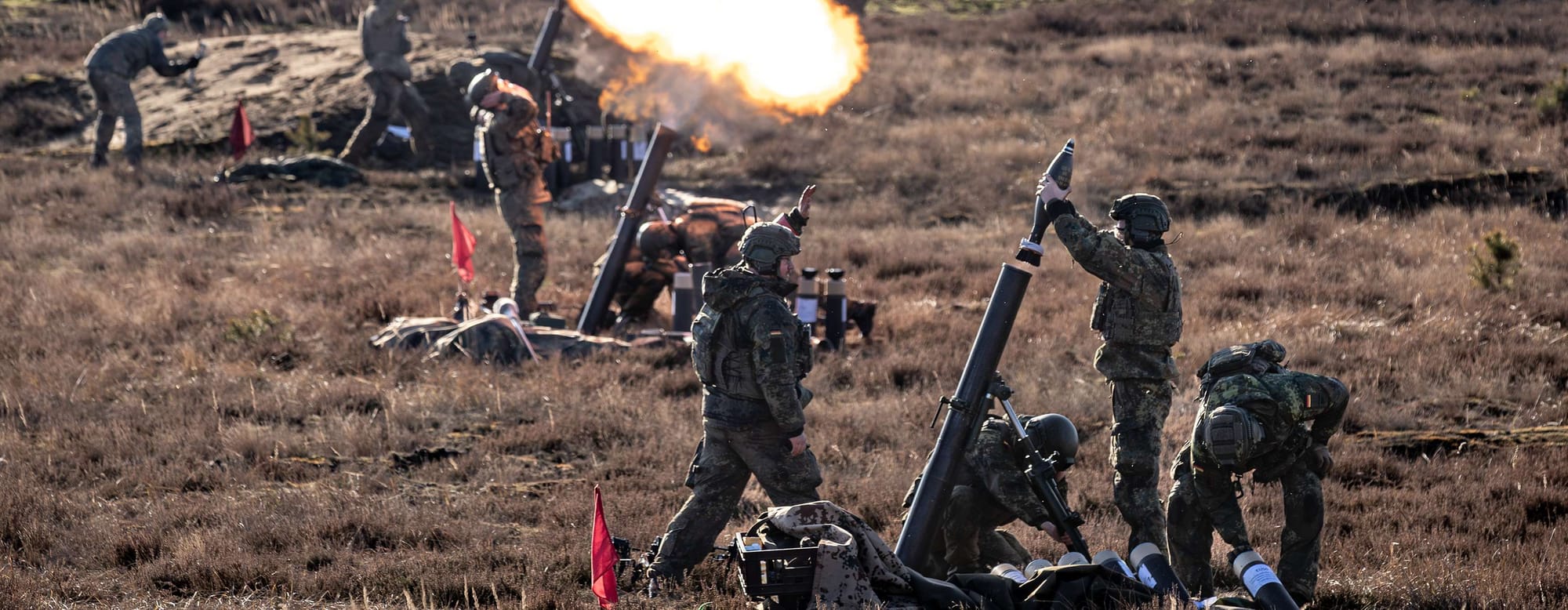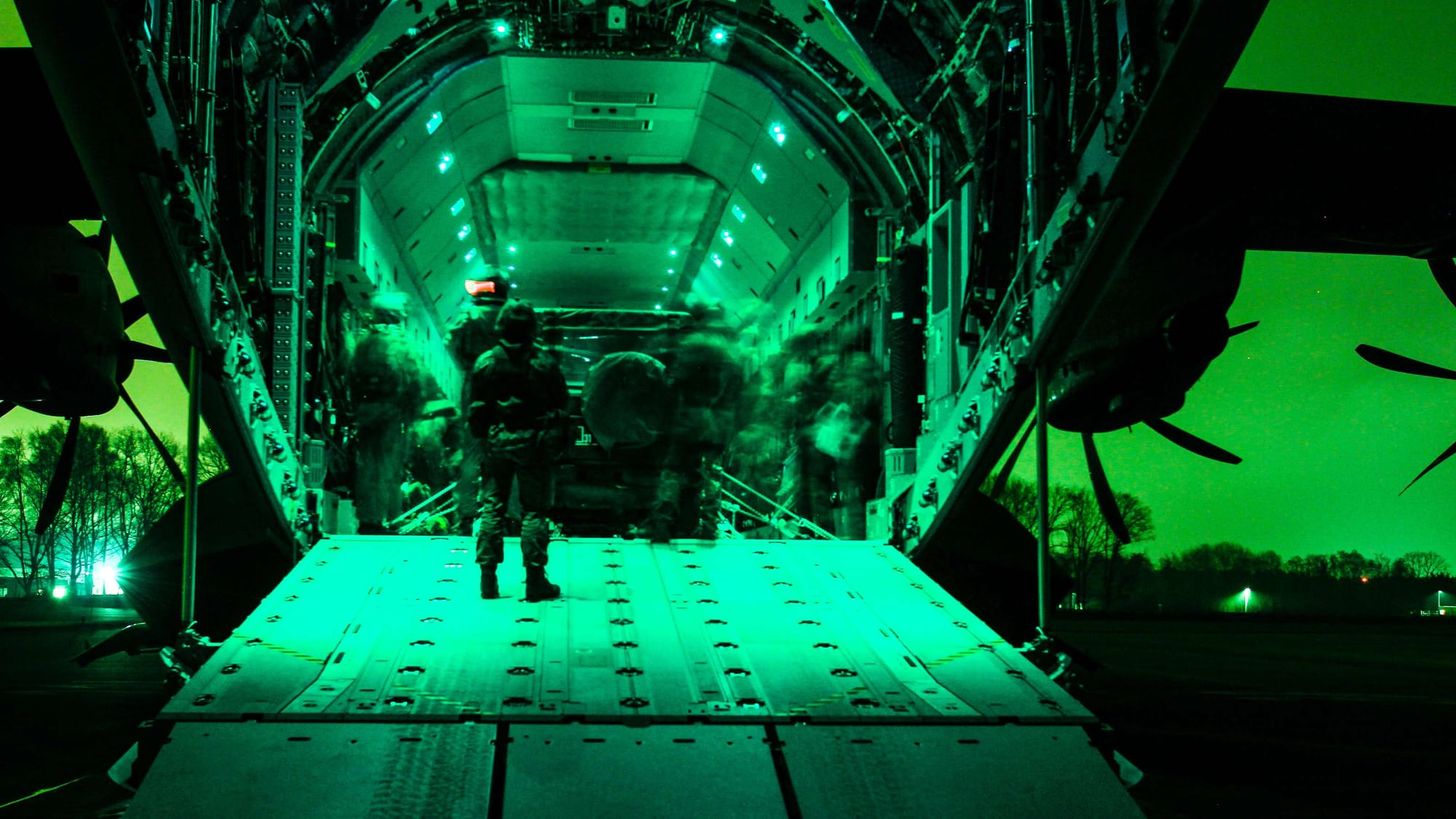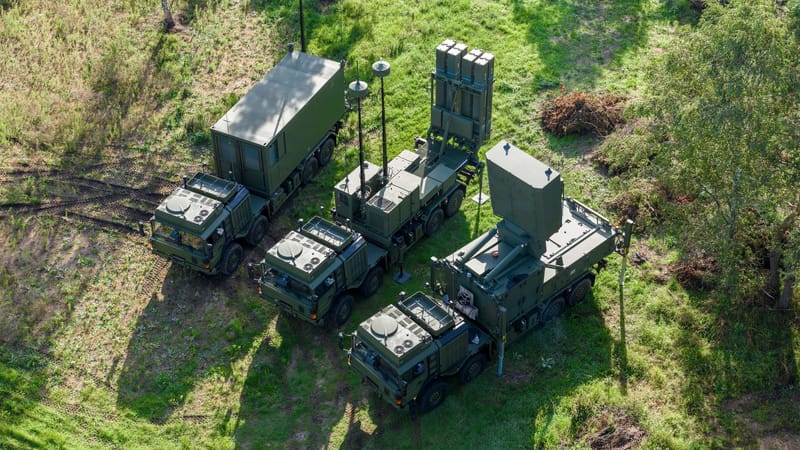Bundeswehr's 'Kalter Sturm': Intense Live-Fire Drill in Germany's Oberlausitz
The regiment demonstrated rapid maneuver warfare, integrating air support, reconnaissance and urban combat tactics. Conducted by 26th Airborne Regiment, the exercise refined close combat techniques, terrain adaptation and fire coordination, ensuring elite combat readiness for modern warfare.
Kalter Sturm: Intense Combat Training in Oberlausitz
In February, Fallschirmjägerregiment 26 from Zweibrücken conducted Kalter Sturm, a rigorous live-fire exercise at the Oberlausitz training area, one of Germany's largest military exercise zones.
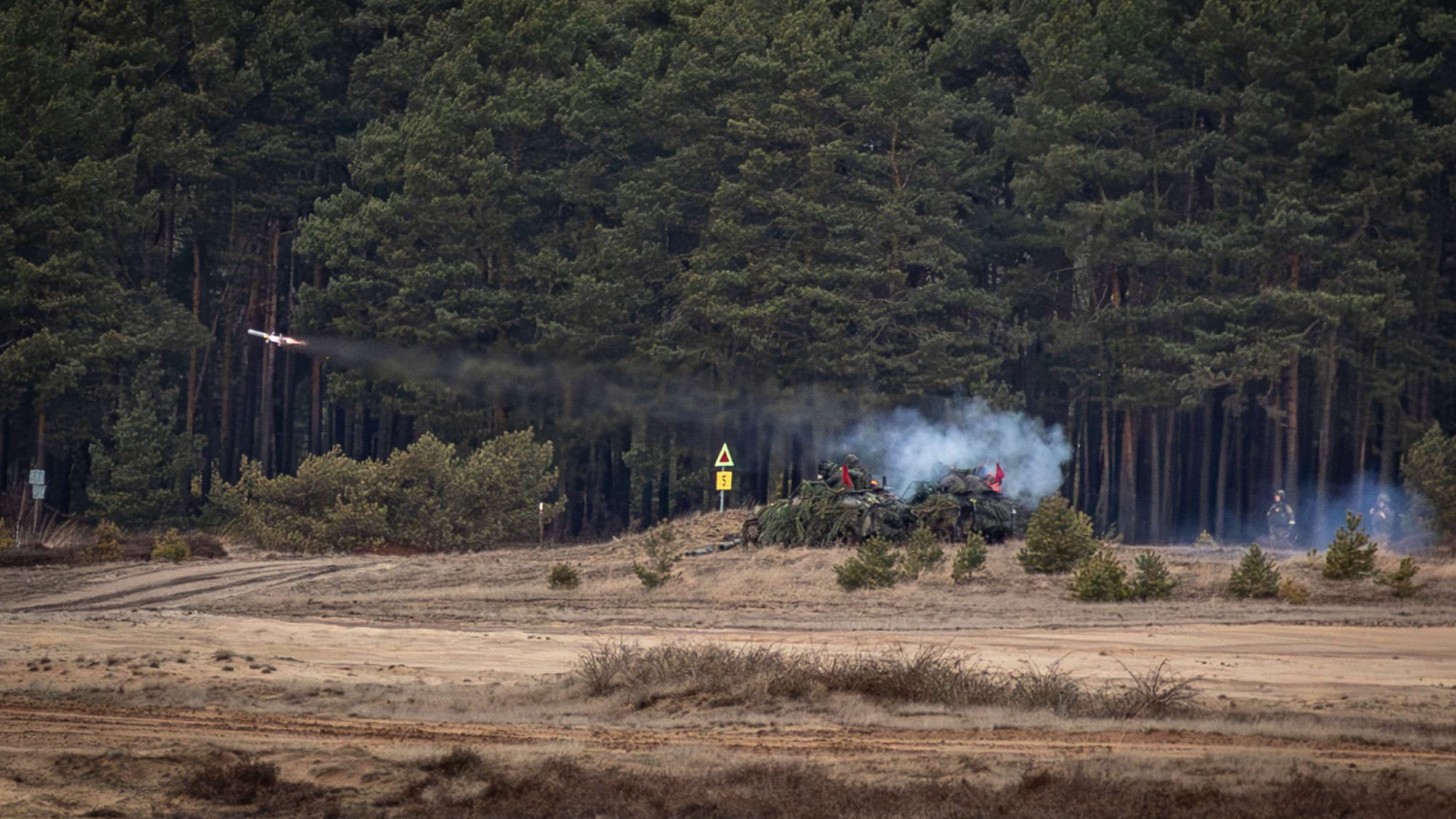
The scenario simulated a collective defense operation under NATO’s Article 5 framework, where a rapid reaction force was mobilized following an attack on allied territory.
Regimental Commander Colonel Oliver Henkel led almost the entire regiment in this comprehensive battle exercise. The operation involved eight companies and 1,200 soldiers, engaging in an intensive 12-day combat simulation designed to test and enhance the regiment’s wartime readiness. Henkel emphasized the objective:
“We are testing the combat capability of the entire regiment while refining our operational procedures under real combat conditions. Only by pushing ourselves to our limits can we fulfill our commitment to national and alliance defense.”
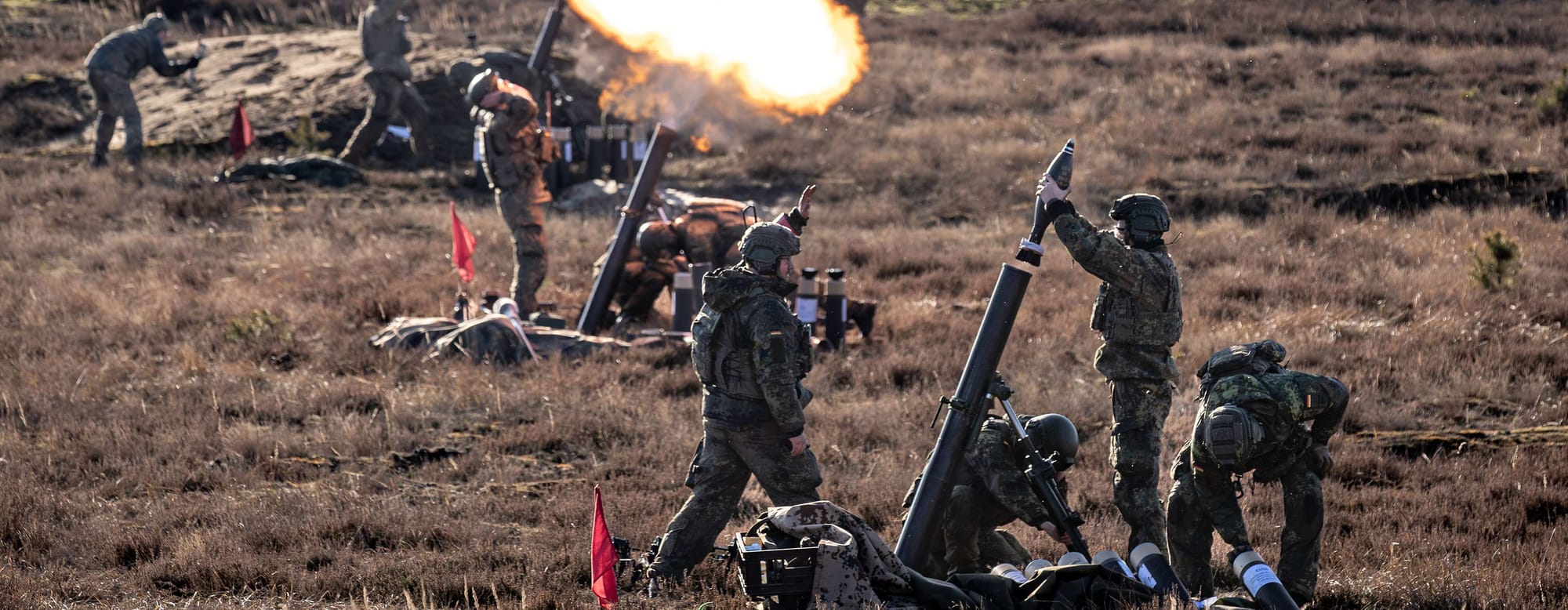
Tactical Coordination and Firepower: A Combined-Arms Assault
The exercise saw a synchronized assault with three companies advancing simultaneously, supported by forward reconnaissance elements.
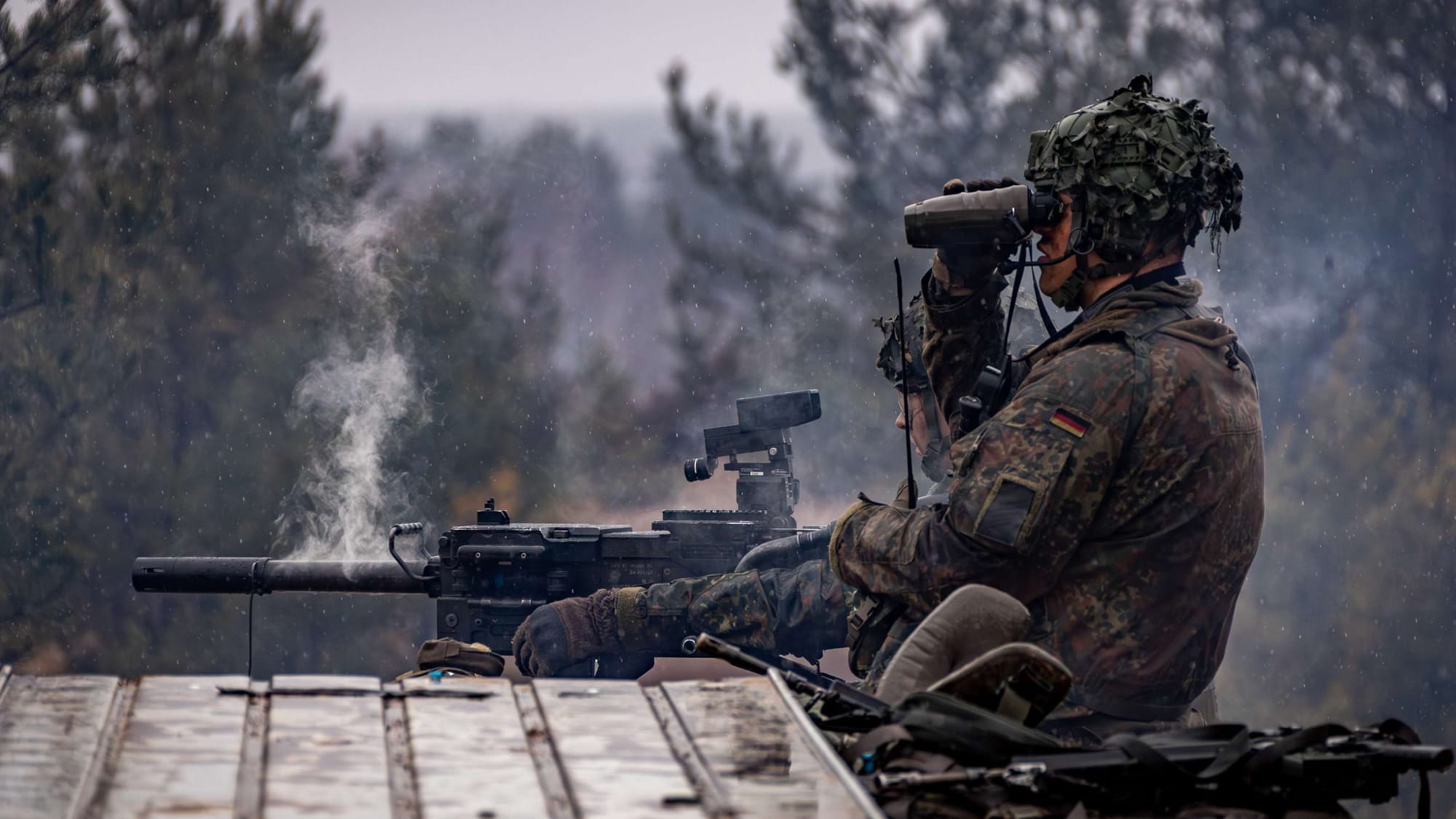
The battle group integrated Wiesel weapon carriers, mortars, dismounted paratroopers, snipers, and specialized EGB (Erweiterte Grundbefähigung) forces, with additional support from combat engineers, medics, and other specialists. Luftwaffe jets provided close air support, reinforcing the Army-Air Force coordination essential for rapid reaction operations.
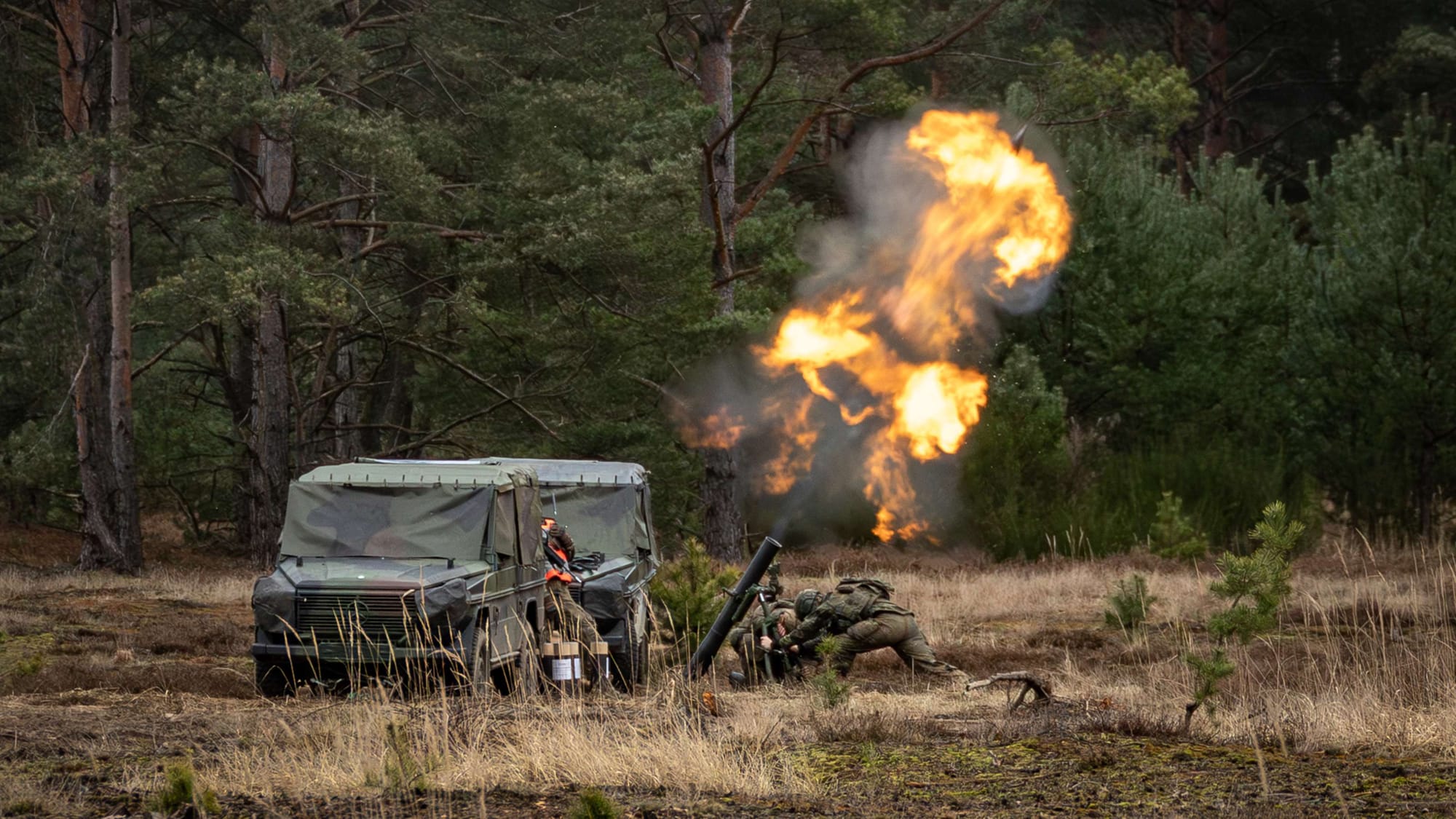
A standout feature of Kalter Sturm was the use of the Wiesel armored platform, a lightweight and highly maneuverable vehicle.
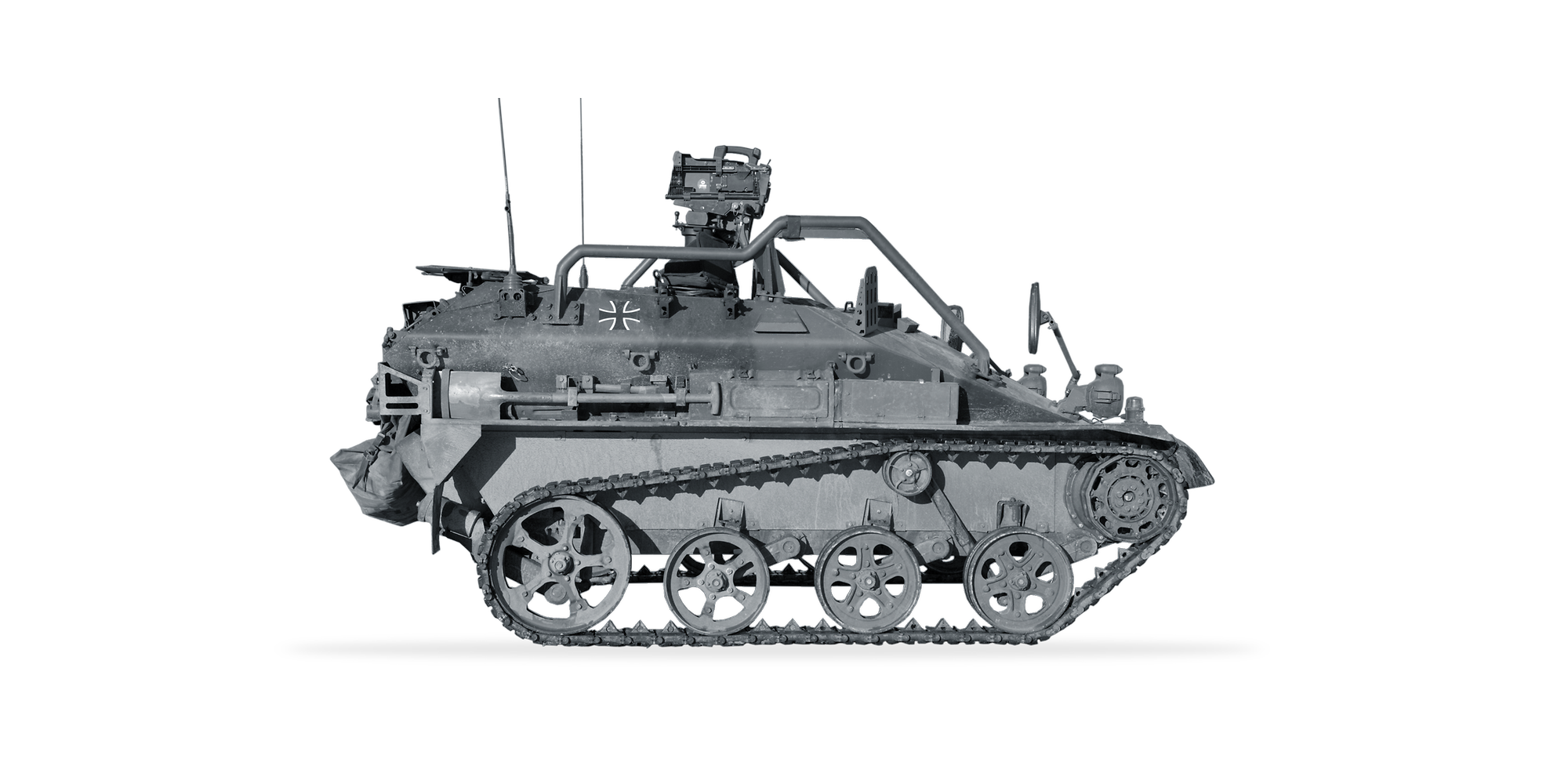
The Wiesel armoured platform is equipped with either a20mm autocannon or the MELLS (Mehrrollenfähiges Leichtes Lenkflugkörpersystem), a multi-role guided missile system capable of engaging targets up to 4 kilometers away.
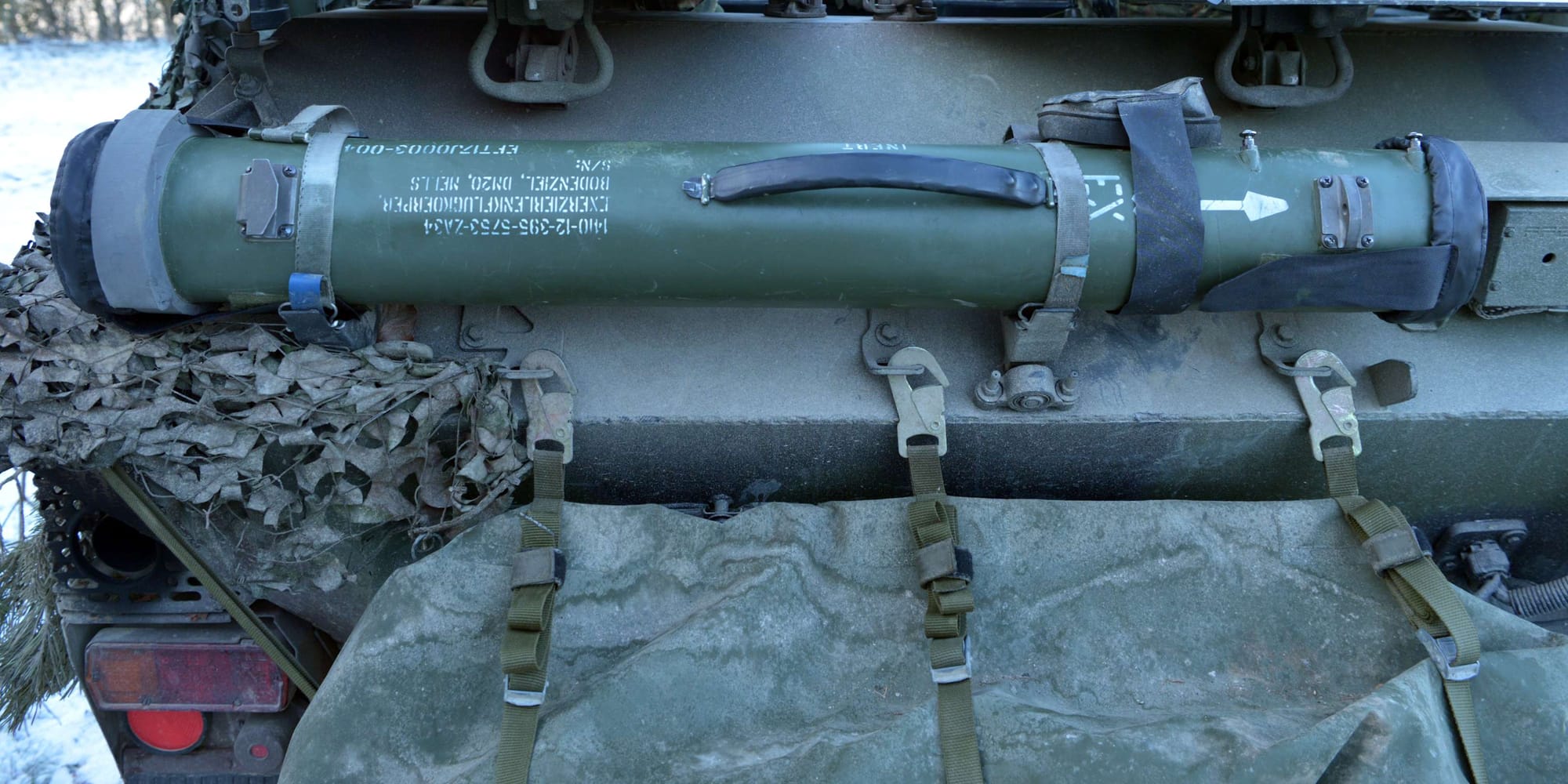
Wiesel operators emphasized their agility, noting that their small size and rapid movement—up to 80 km/h—made them exceptionally difficult to target in combat.
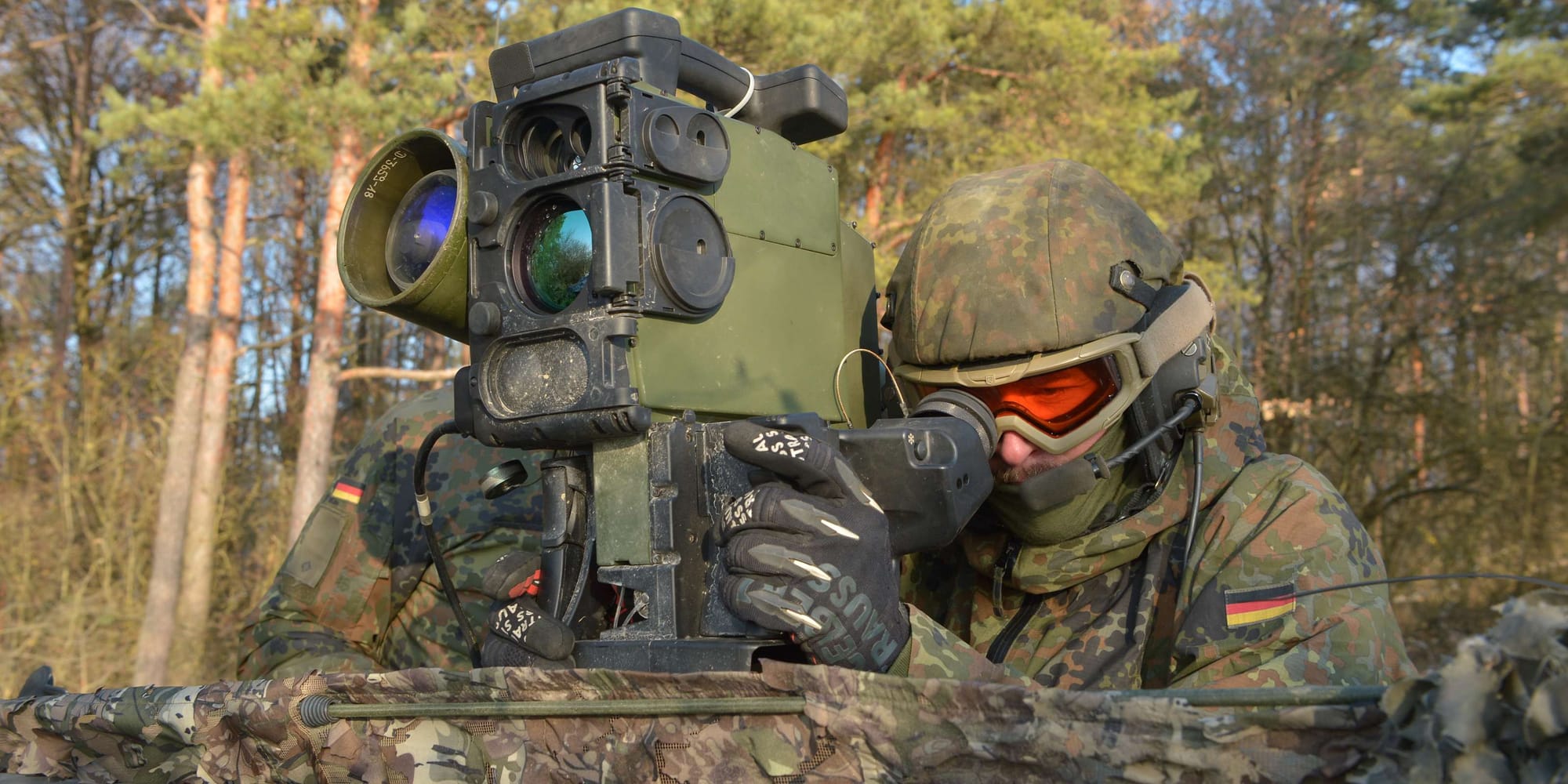
Navigating the Oberlausitz Battlefield: Challenges and Strategies
The terrain of Oberlausitz presented additional challenges. While the vast open plains favored armored advances, dense forests and rugged landscapes demanded close-quarters combat tactics.
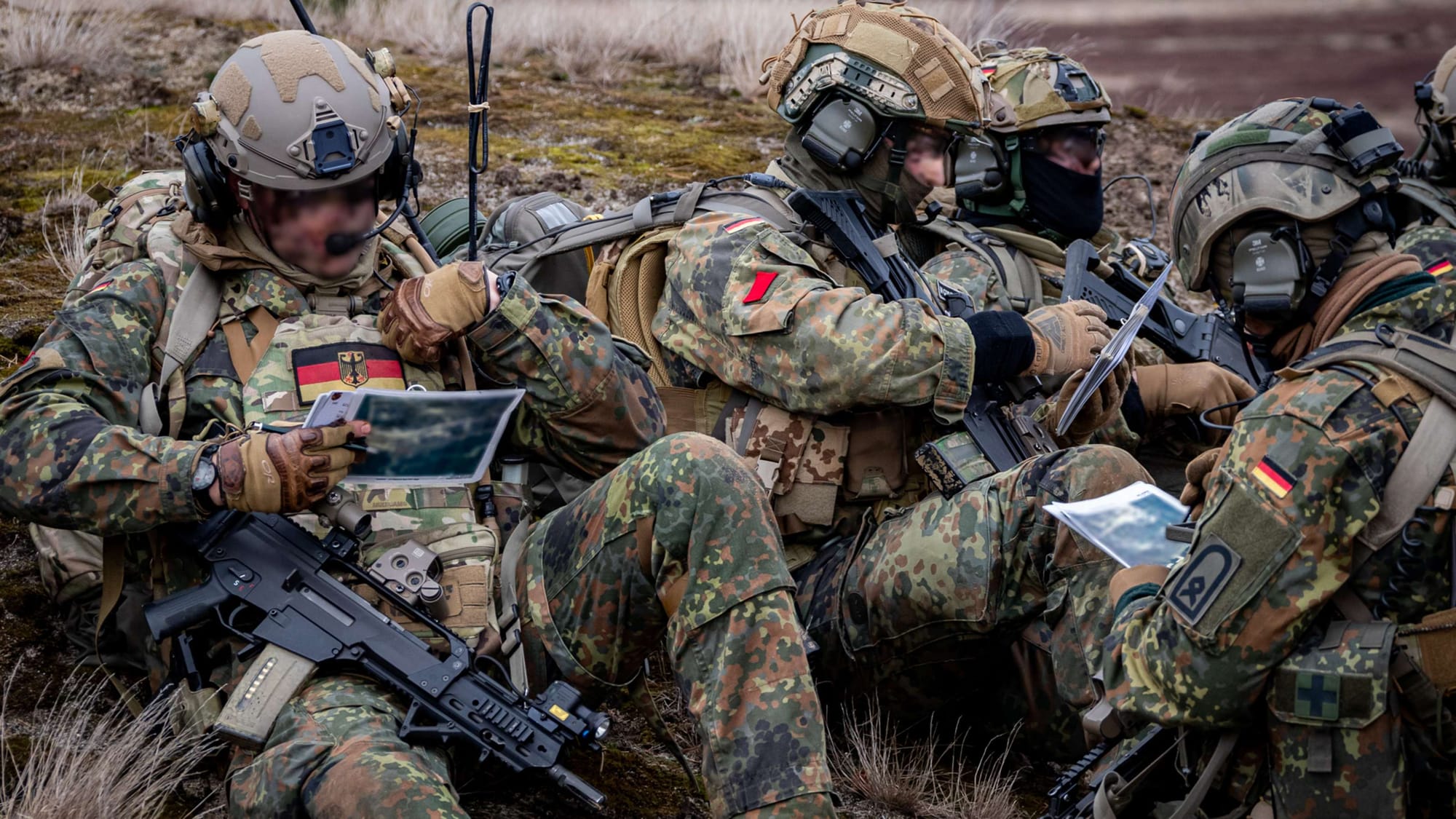
Fallschirmjäger forces demonstrated their ability to seize key terrain, advancing through narrow, fortified enemy positions using coordinated fire support from machine guns, anti-tank missiles, and artillery. Their proficiency in combined-arms operations, integrating infantry with heavy fire support, showcased their adaptability in modern battle conditions.
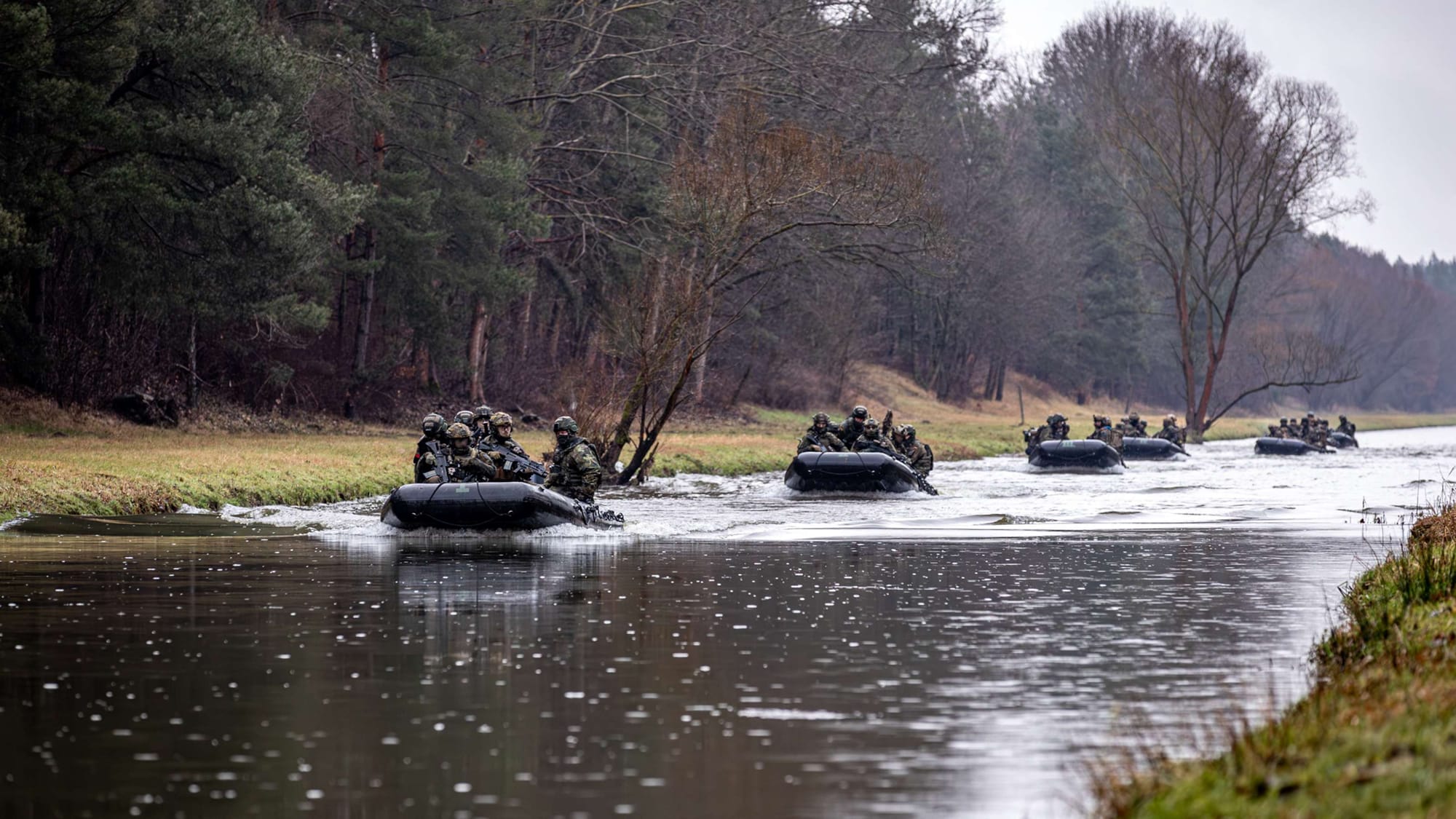
With the support of the pioneers, the paratroopers also succeed in approaching the battlefield via a river.

Shortly before engagement: German shepherd military dogs support the paratroopers very effectively in combat. With their keen senses, they can detect dangerous situations at an early stage.
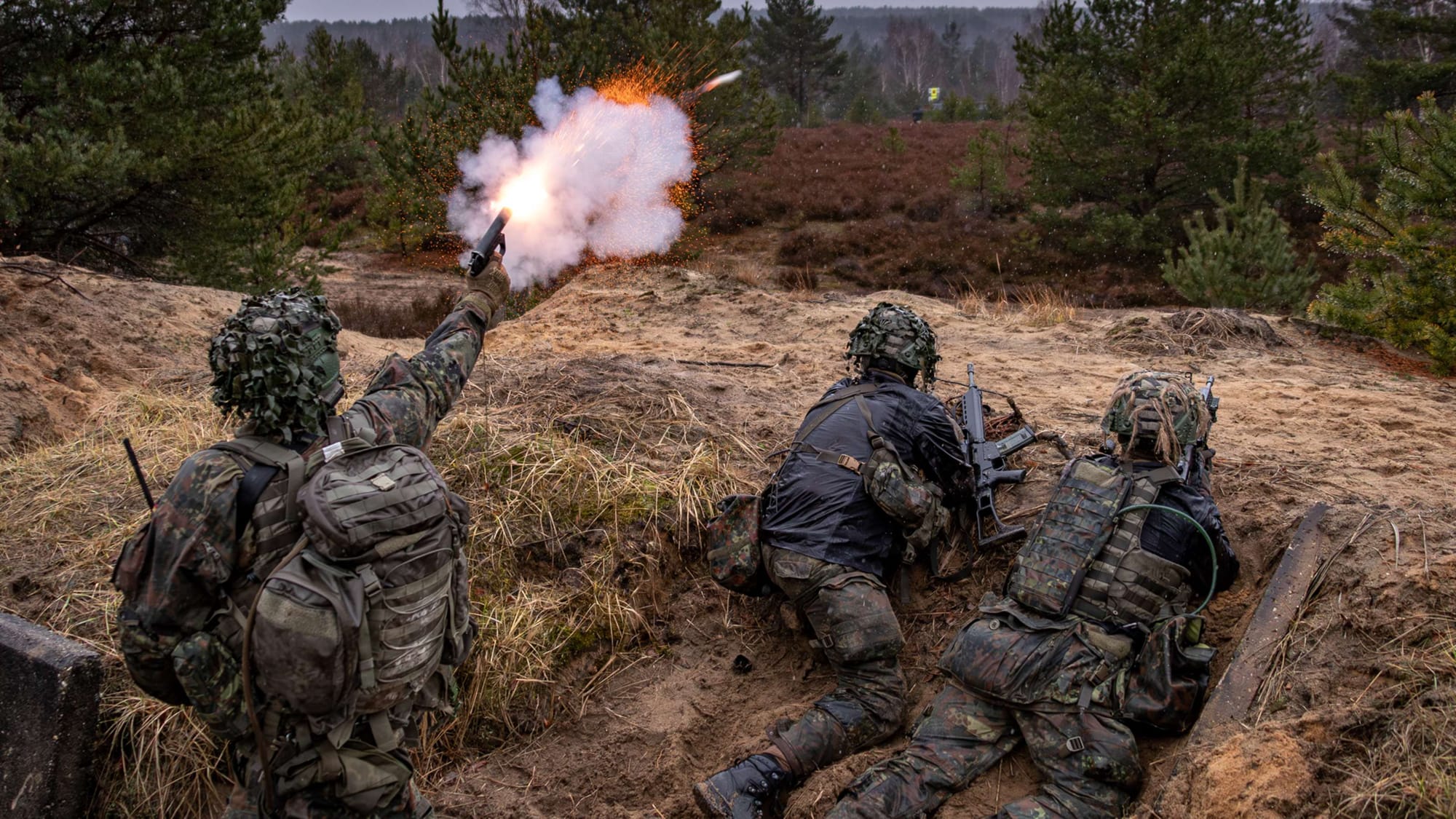
In narrow and confusing terrain, the demands and stress levels are high. The group leader indicates the direction to the enemy for all to see with the signal pistol.
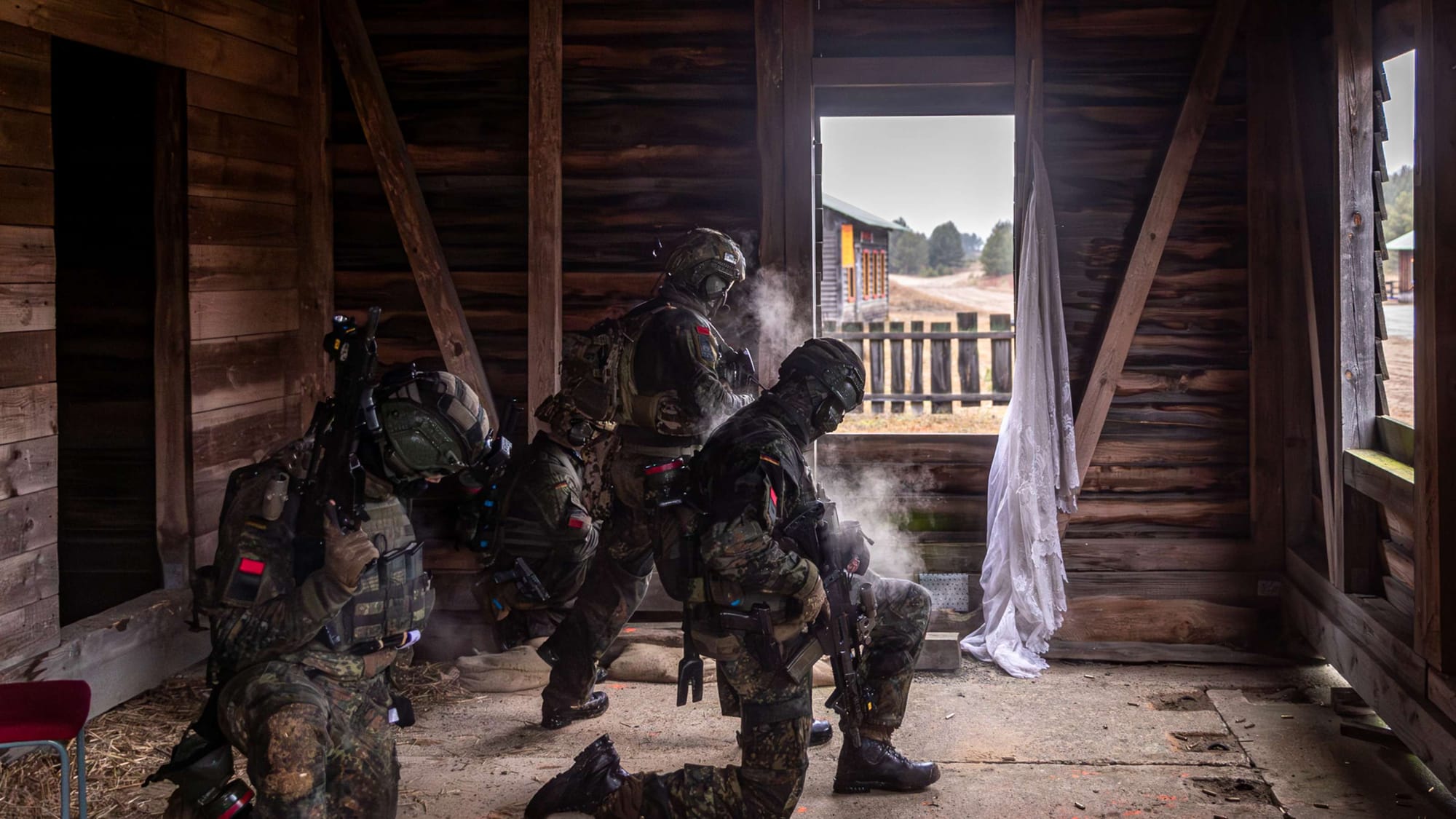
Local and urban combat is one of the most intense types of combat. Contact with the enemy is unavoidable in confined spaces.
One company commander summarized the training experience:
“We push ourselves to the limits and beyond. This level of intensity prepares us for real combat scenarios, ensuring we remain one of Germany’s most formidable rapid reaction forces.”
Read also about Blauer Greif military drill from Germany's Bundeswehr here on grosswald.org:

